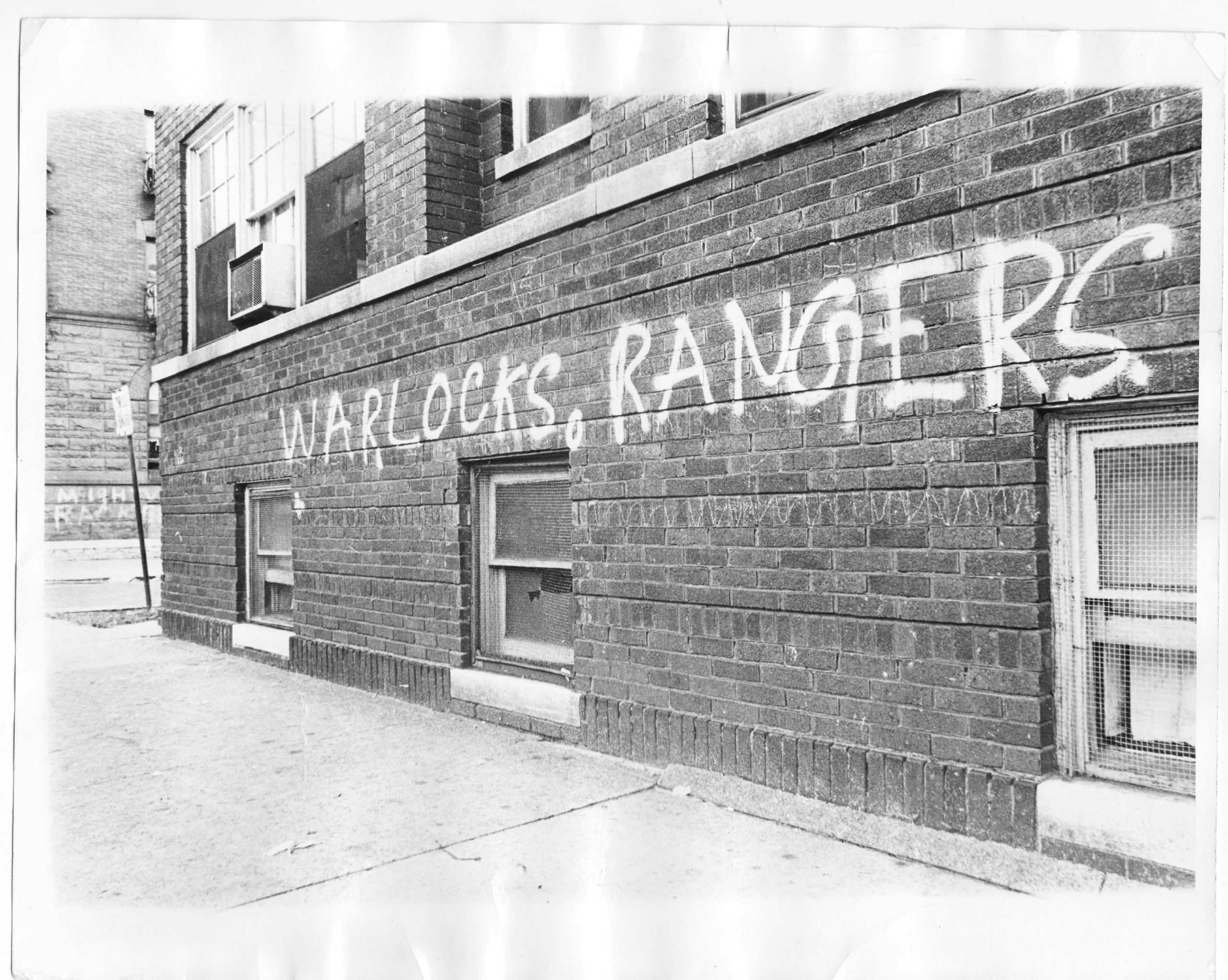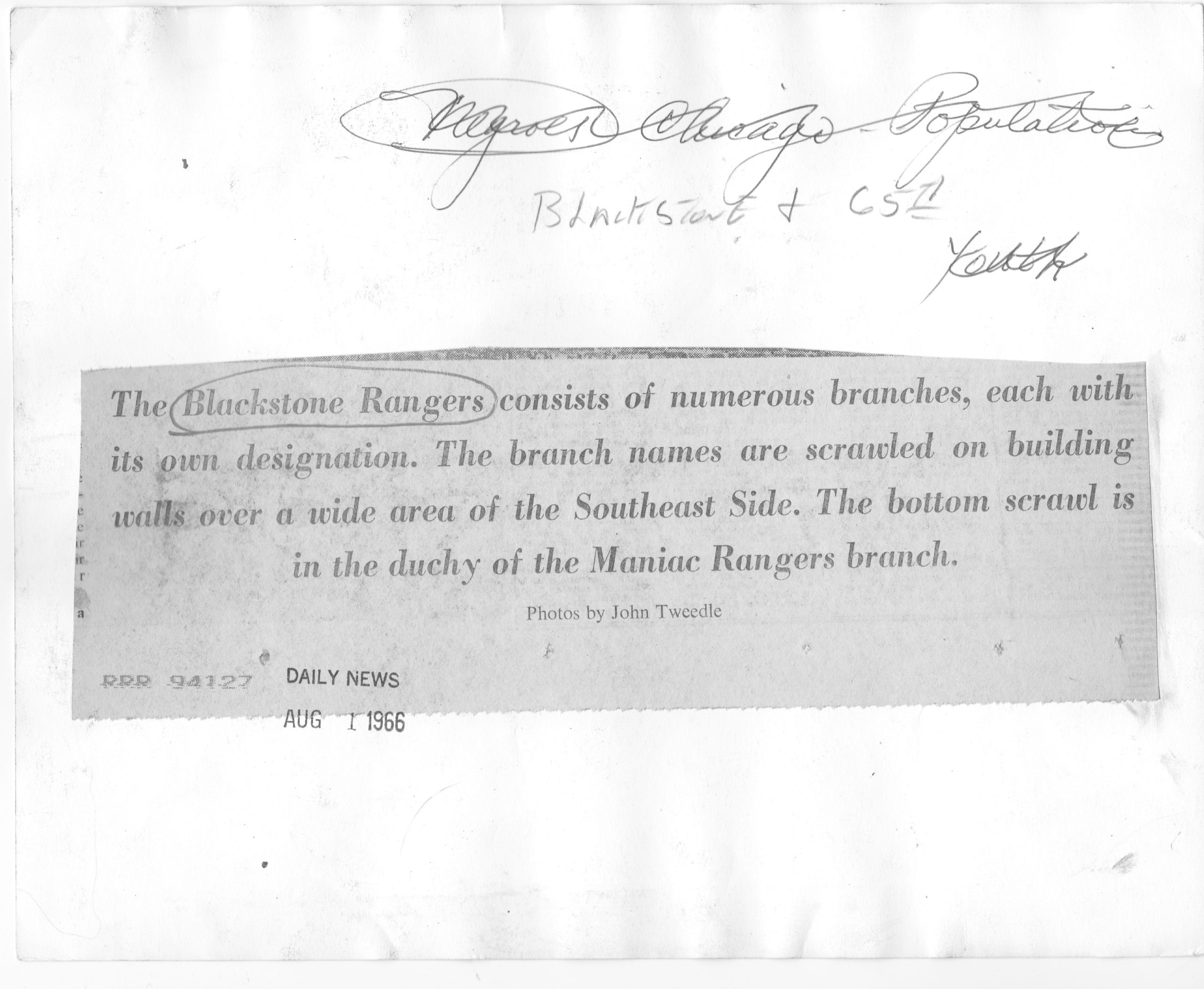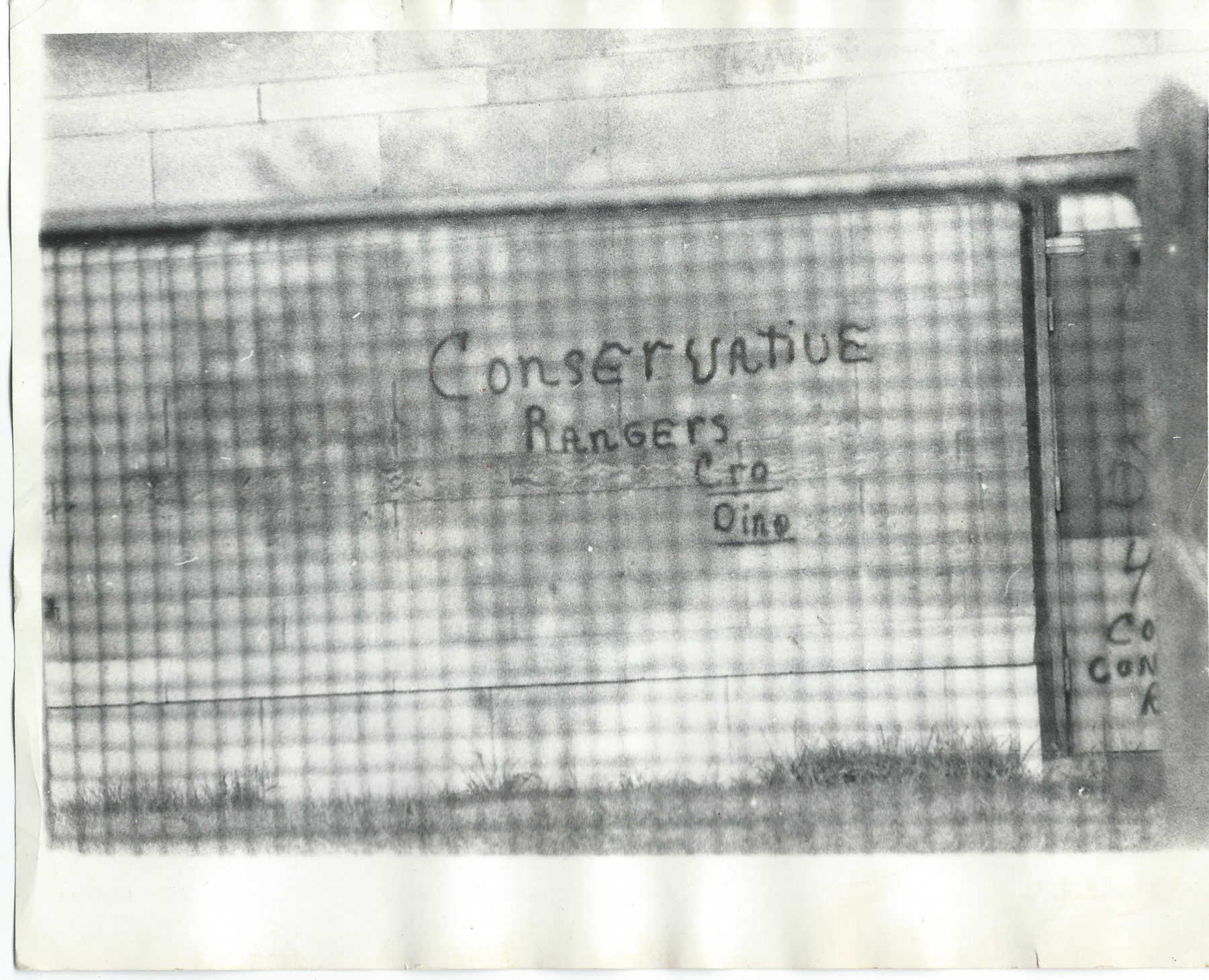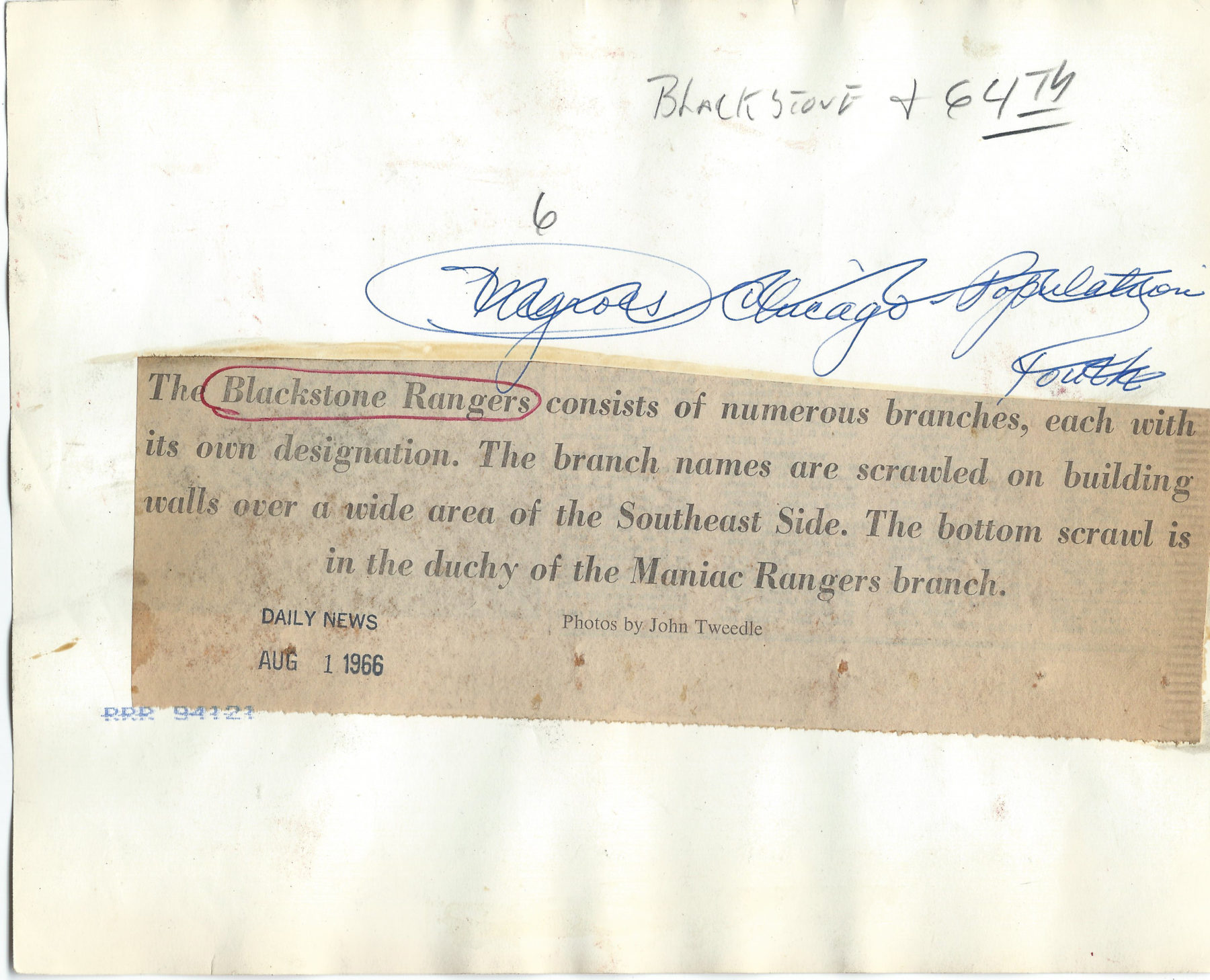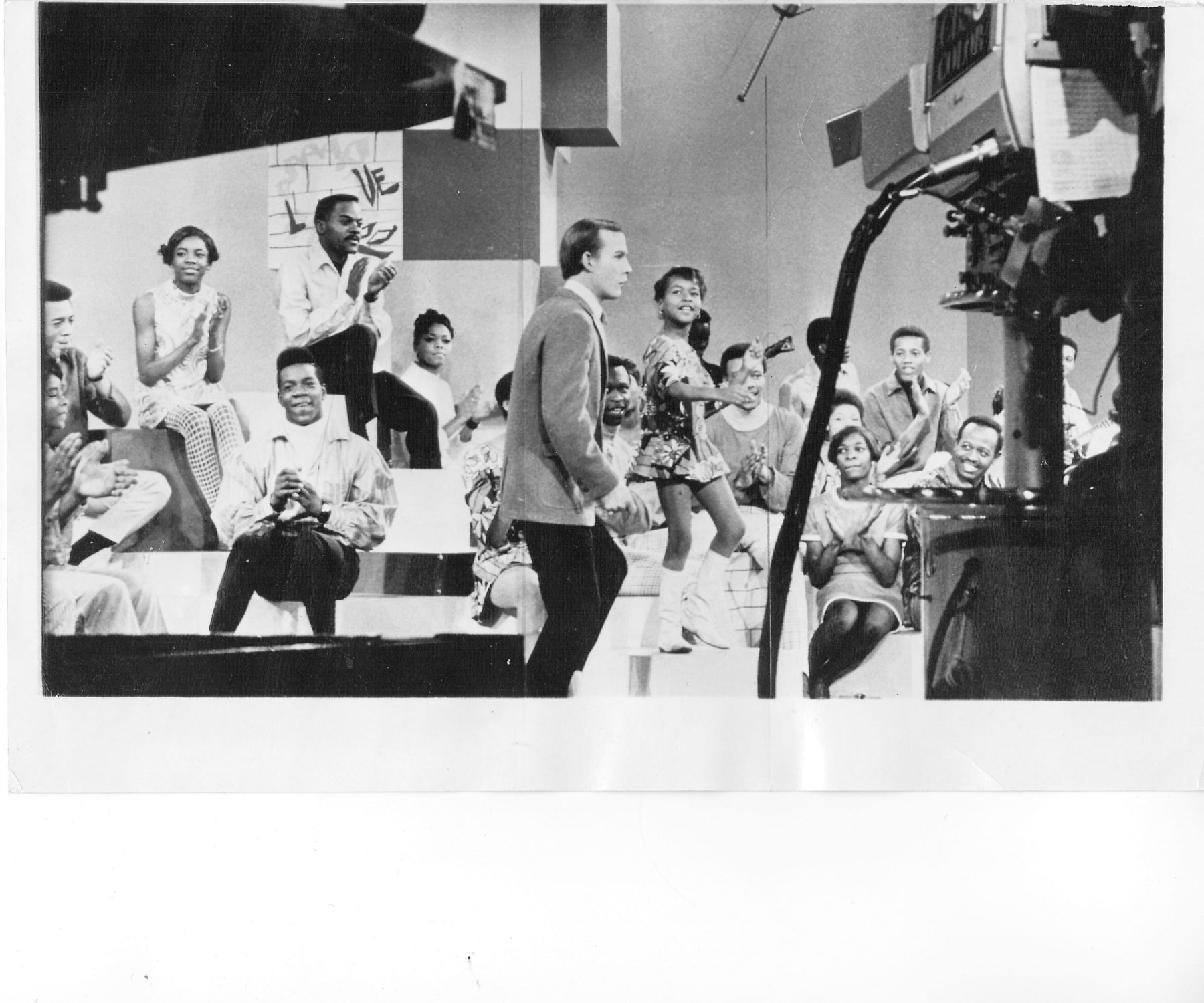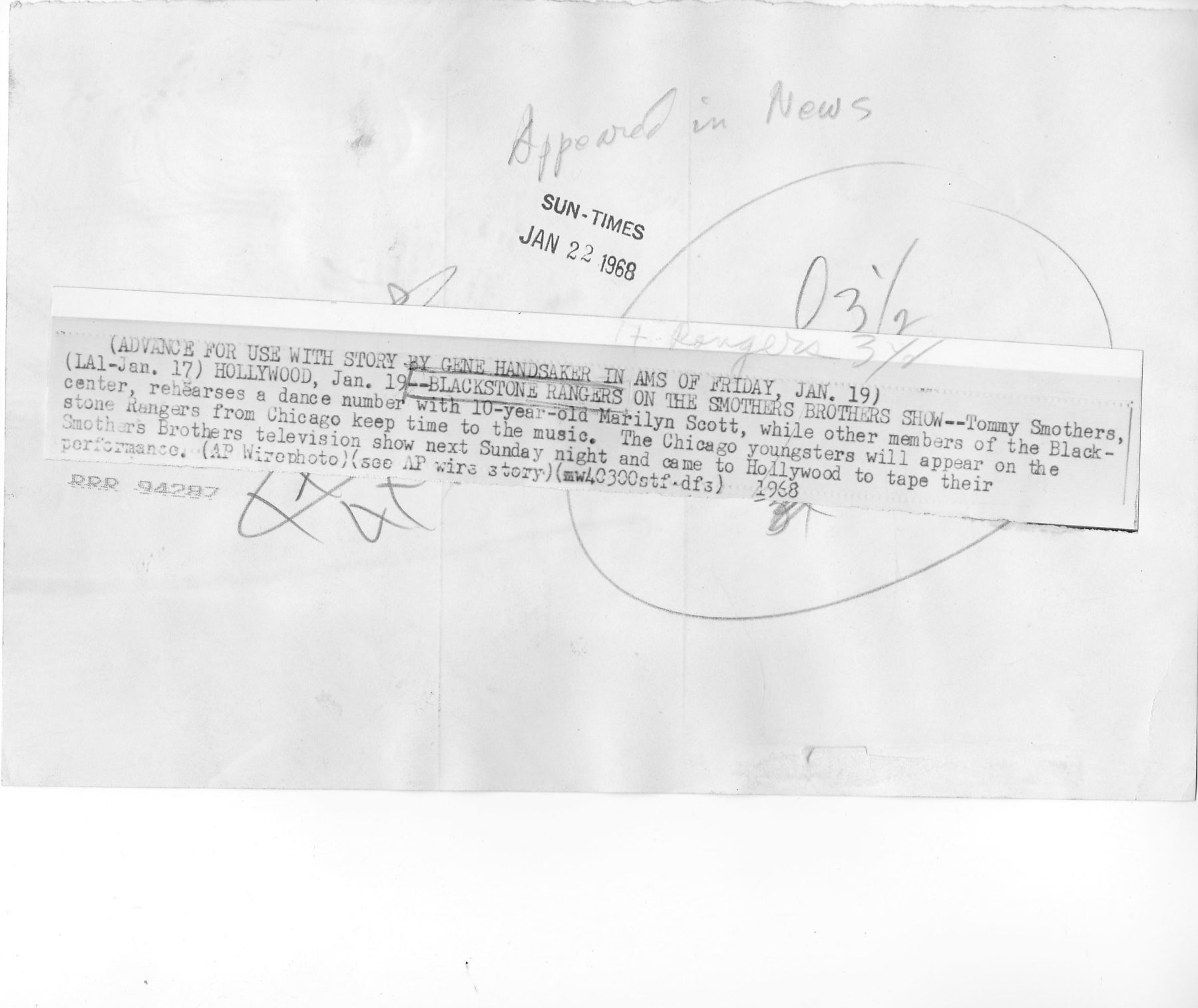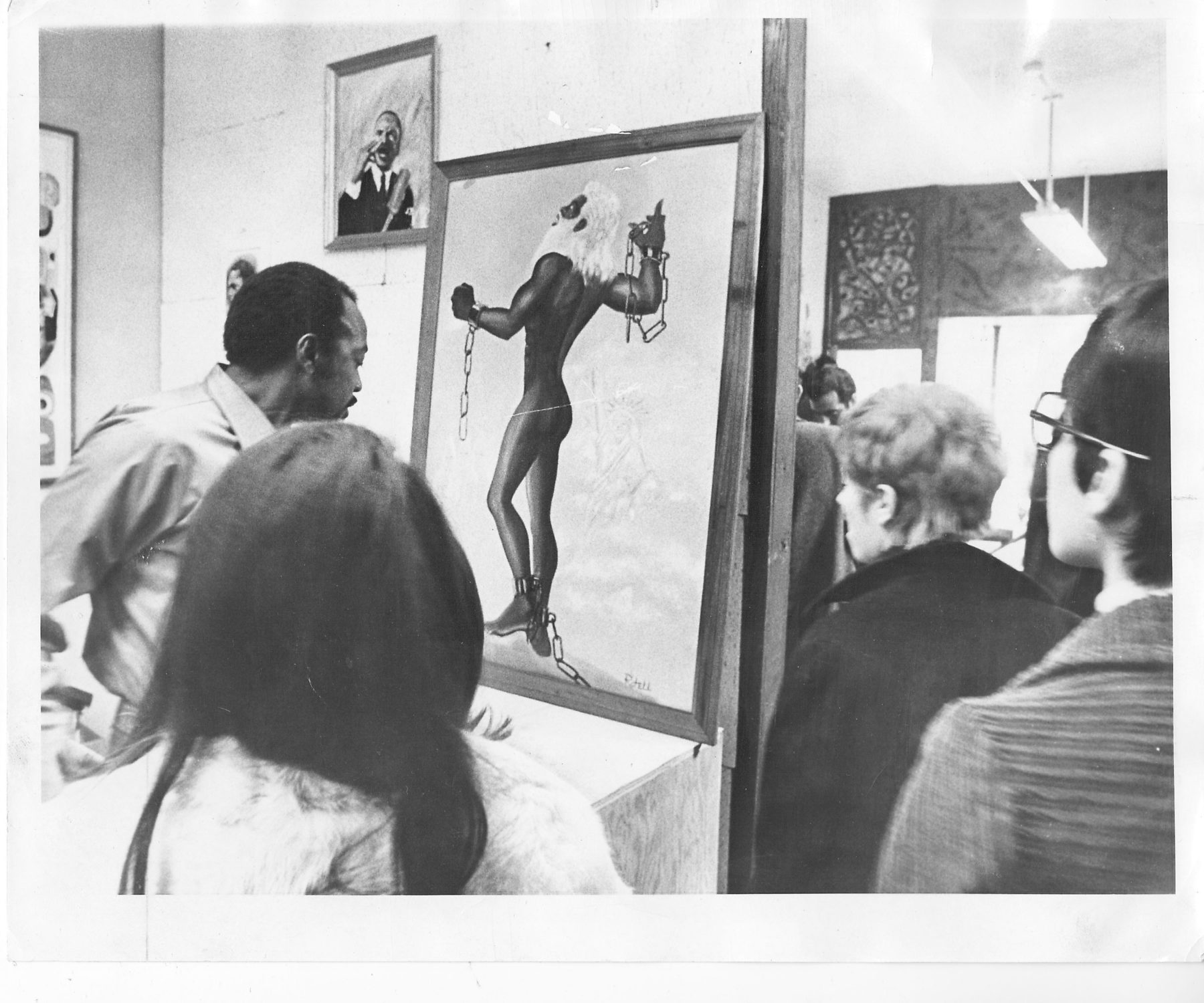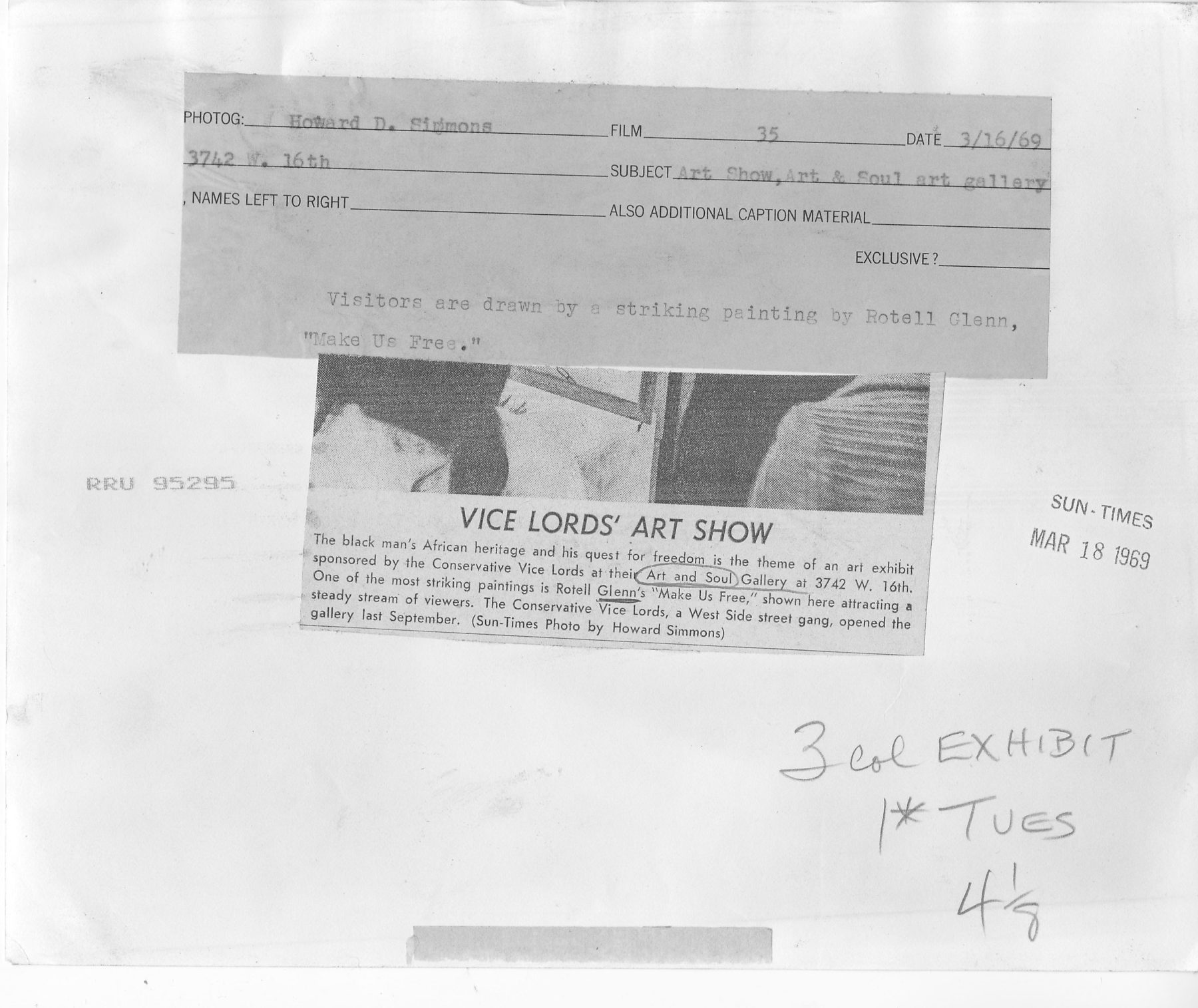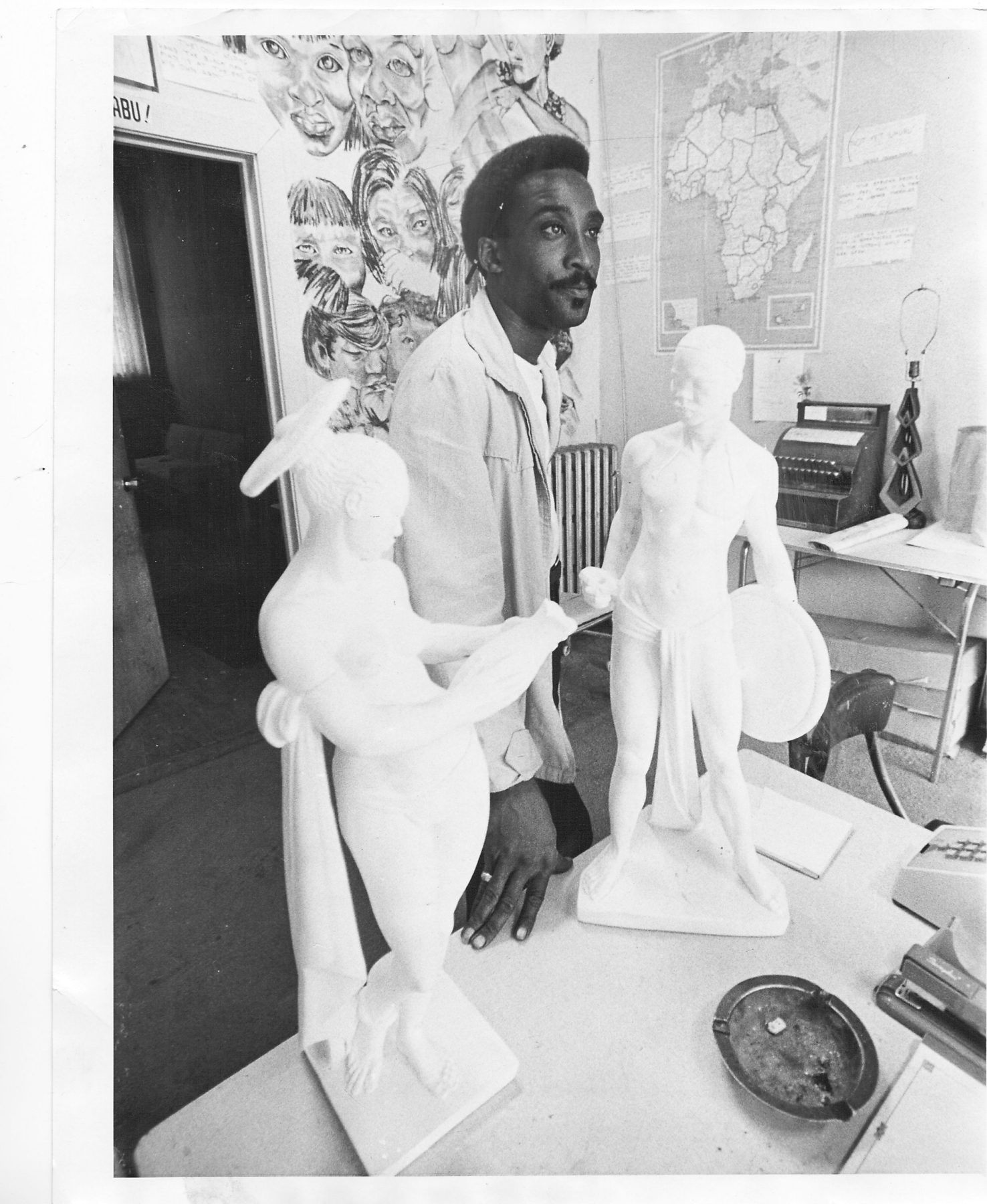2. Gangs, Art, Mark-making

Many young African American men in mid-twentieth-century Chicago took part in the street organizations known as gangs, which began as groups of neighborhood young people who banded together for self-protection against rival groups, and followed a tradition of generations of white European immigrants who also formed gangs in their neighborhoods. Gangs were patriarchal and engaged in violence (though on a much smaller scale than in later decades) but their ability to self-organize hinted at untapped political potential, which did not go unnoticed by organizers.
The Blackstone Rangers on the South Side and (Conservative) Vice Lords on the West Side both reinvented themselves in the late 1960s as community development organizations. Both organizations sponsored job training and neighborhood cleanup activities. Notably, they also engaged in cultural activities. Graffiti began as a way of marking territory and expressing identity; it was not the same as mural art, but it, too, served as a visible intervention in public space (2.1., 2.2). And as part of their new community-oriented identities, members also found more culturally licit ways of making their mark in both visual and performing arts. The multitalented singer Oscar Brown, Jr. created the successful musical revue “Opportunity, Please Knock” in collaboration with members and associates of the Blackstone Rangers, and they toured nationally, making an appearance on the Smothers Brothers Comedy Hour television show (2.3). The Conservative Vice Lords (CVL, Inc.) created multiple enterprises in North Lawndale. These included a gallery and workshop space known as Art & Soul (2.4), a collaboration with the Museum of Contemporary Art and other neighborhood organizations, and the African Lion shop (2.5). The African Lion, like the Native Shop (1.3), emphasized African and African-inspired crafts and products geared toward African American consumers.
The photo of the CVL leader Bobby Gore in his office at the African Lion (a picture that, given the notation on the back, may have been taken as early as 1968) was heavily cropped for use later in an article about Gore’s arrest in 1970, as the city of Chicago began a “War on Gangs” that targeted the organizations’ fledgling community efforts just as ferociously as it went after actual criminal activities.
Photographer: John Tweedle
Chicago Daily News
published 8/1/66
Photographer: John Tweedle.
Chicago Daily News
published 8/1/66
AP Wire Photo
Chicago Sun-Times
1/17/68
Photographer: Howard D. Simmons
Chicago Sun-Times
3/16/69, published 3/18/69
Photographer unknown
Chicago Sun-Times
published 5/28/70
